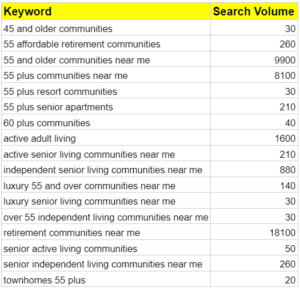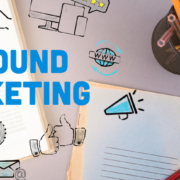What Is an Integrated Marketing Campaign?
If you’ve been reading up on marketing topics and you landed on this blog post, it’s probably because you’ve been scratching your head over the phrase “integrated marketing campaign.” What is it? Why should senior living marketers care? What goes into planning an effective integrated marketing campaign? Below, we answer those questions—and many more.
What’s an integrated marketing campaign?
An integrated marketing campaign means that all the different marketing tactics—outbound, inbound, paid, organic—align and work toward the same goal.
For example, let’s say your Austin-based senior living community issues a new guide: 10 Reasons Why Austin is a Great Place to Retire. The goal is to get people to download the guide and to nurture those folks, moving them from marketing-qualified status to (hopefully) sales-qualified status.
With an integrated marketing campaign, your team would create . . .
- A dedicated landing page on your website with a form so people can download the guide
- A call-to-action on your home page that talks up the guide
- An email marketing campaign promoting the guide
- A social media campaign promoting the guide
- Paid digital ads promoting the guide
Notice how all the various marketing tactics are aligned and supporting the same goal. That’s an integrated marketing campaign in action.
That seems like common sense. Why make a fuss about calling it an “integrated” marketing campaign?
In the not-so-distant past, marketing alignment wasn’t always a thing. And even within modern marketing departments, silo mentalities can still creep in. The website team is doing its own thing while the social media team is doing its thing and so forth.
When you have too many teams working on too many different things (and not talking to each other about all these different things), you can end up with diluted messaging or worse—messages that conflict with one another.
It’s the classic situation where the right-hand doesn’t know what the left hand is doing.
So are you saying every tactic—for example, every Facebook post or every pay-per-click ad—has to be part of an integrated marketing campaign?
No. Obviously, sometimes you’re going to post a picture to Facebook simply because it’s fresh and current and not because it’s tied into a larger marketing campaign. Or you might run PPC ads that are all about building brand awareness around your community’s name when people search on competitors’ names. This is a common practice for PPC ads and wouldn’t have corresponding campaigns in social media or email marketing, for example.
But more often than not, your marketing team will—and should—create integrated marketing campaigns.
Why are integrated marketing campaigns so important?
For a few reasons. First, you’re going to get a much bigger bang for your marketing buck if you align your marketing tactics. Go back to our example above about the retirement guide. If you put all that effort into creating the guide, but you send only two tweets promoting it, how’s that going to work out? Not very well.
Second, by beating the same marketing “drum” across different channels, you’ll have a better chance of getting your message seen, heard, and—most importantly—remembered. Keep in mind that people need to encounter a message many, many times before it sinks in.
Third, integrated marketing campaigns are much easier to measure than siloed campaigns. When you use a marketing automation tool like HubSpot, you can view the integrated marketing campaign’s performance in one dashboard. This gives you valuable info that you can respond to in real-time.
For example, if you notice that one aspect of your integrated marketing campaign appears to be lagging—maybe the paid ads aren’t producing results the way you expected—you can dig in quickly, make some adjustments, and see if your changes make a difference. You’ll also start to get an excellent sense of what types of campaigns and which channels tend to serve you best. This will allow you to direct more budget to what’s working.
What are some best practices for integrated marketing campaigns?
Communication is critical. Make sure everyone involved with your community’s marketing talks to each other. This is especially true if you have various teams (like a social media team and a paid search team)—and if you outsource any work to a marketing agency. Everyone should have insight and input into currently running campaigns and planned campaigns.
This communication process will likely involve . . .
- Having regular check-in meetings. Meetings don’t need to be long. They should be useful and productive, though.
- Giving everyone access to the master content and campaign calendars. Whether you opt for Google Workspace or Microsoft Teams and/or use project management tools like Asana or Monday.com, the key is consistency. Make sure everything is loaded and that everyone has access to the same tools.
Beyond that, a successful integrated marketing campaign always begins with your goal. What’s driving your campaign? Clicks? Downloads? Tour requests?
And don’t forget about your senior living sales team. While they don’t necessarily need to be in the weeds for each integrated marketing campaign you run, they should most certainly be aware of when campaigns are running and what campaigns are in the pipeline.
Need help getting your integrated marketing campaigns in synch?
We know how to seamlessly integrate all the various tactics around each marketing campaign—and we know how to keep a healthy flow of communication between your marketing people and ours. It’s a team effort, and we love hitting home runs with our clients. Let’s chat about your marketing needs.













